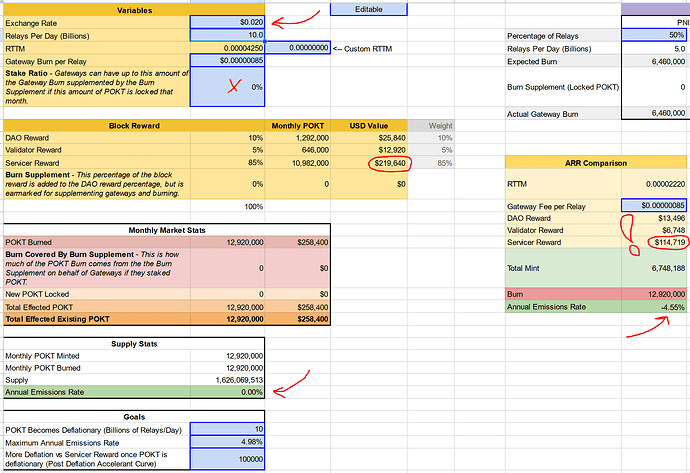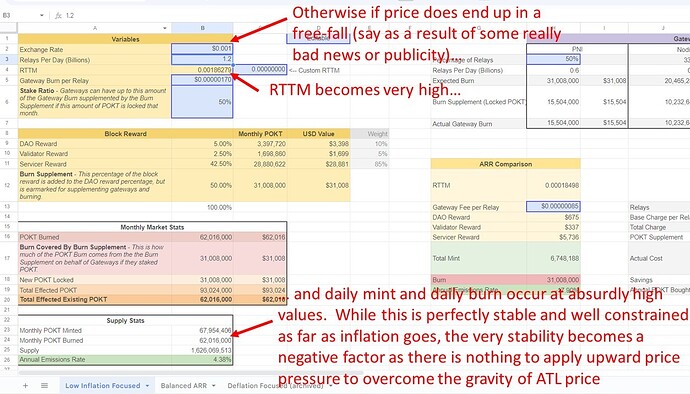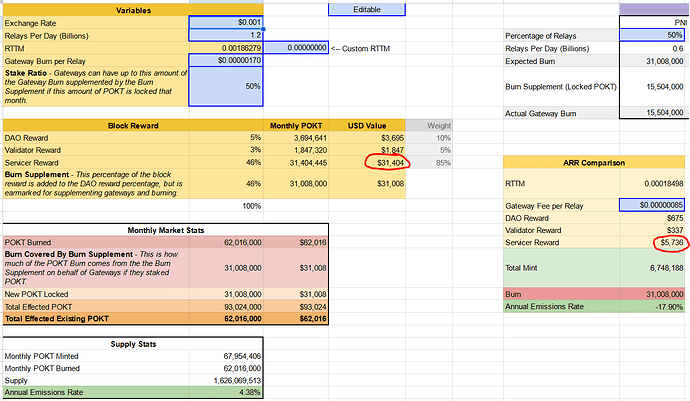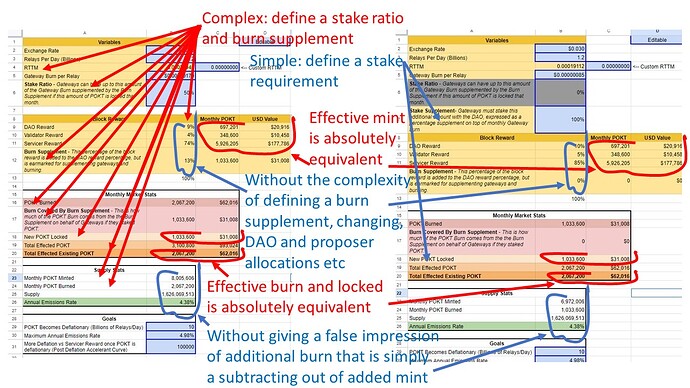Thanks for the feedback and I understand your points.
So… actually BASH provides a balanced version of ARR already, without staking. If you do not want to activate the staking requirement for gateways, and instead do that down the road, then it is already in BASH, while still providing balance to where ARR is lacking.
Balanced ARR
To show you what I mean, I created a page that only focuses on buring, with the staking elements turned off.
To take out the staking on BASH, I simply set the GFPR to $0.00000085 (which is the same as ARR) and set the Stake Ration to 0%. This means that gateways have to pay the full GFPR and there is no Burn Supplement.
Now let me show you how BASH accomplishes ARR’s goals better than ARR, even without the staking elements of BASH.
If POKT price falls below 38C, (which it already has) then ARR’s minimum servicer allotment of $250k get exponentially eroded by the time we hit 10B relays a day. Look at what ARR would produce if POKT hits 2C… only $114k for servicers ![]()
However, as you can also see on the left, BASH keeps the ecosystem as balanced as possible. Instead of having a -4.55% Emissions (which is far more than what we need in the short term), BASH properly balances the inflation so we still hit deflation at 10B relays a day, but with $219k still supporting servicers. This is because ARR is not balanced for lower POKT prices. Already today, if it were to pass, it would cut servicers much more than it advertises in the proposal itself.
BASH is the balance to that. It accomplishes all the goals of ARR, but in a balanced manner (even with staking turned off). If the price of POKT hits 15C then the servicer budget is only $86k with ARR, which is 1/3 ARR’s advertised servicer budget. BASH stays at $219k even with the price drop.
Complexity
While BASH has more algorithms, I would not say it adds any additional complexity (especially with the staking turned off for a later date). I would argue ARR is much more complex, not because of static 255k POKT per day it mints, but because it creates an unbalanced ecosystem that is dramatically effected by sways in price. Price drops exponentially hurt other ecosystem participants in an uncontrolled manner.
Adding balance in this case makes for a more involved spreadsheet, but it can provide a much more stable environment for the ecosystem.
ARR will require many more proposals in the future to create balance. Once relays hit over 10B, and POKT becomes deflationary, ARR is designed to just keep feeding deflation without providing any balance for other ecosystem participants. BASH provides balance that scales to infant relays past 10B.
My Ask
What are you thoughts on the Balanced ARR page of BASH, where the staking elements are entirely turned off for a later date?
We could propose BASH for the better balance and ecosystem predictability (while hitting all the goals of ARR), and hold off on the staking elements for now. What would you say to that?
This would just be a matter of submitting the BASH proposals with parameters that do not include staking (as they are in the Balanced ARR page).










